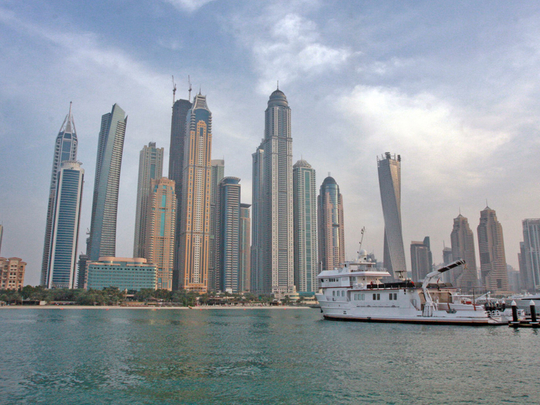
Dubai: A developer’s association with a project does not end with the handover — as per the regulatory requirements, it has a 10-year liability for any major structural defect that may show up on the building.
But what are investors in the project — or tenants — to do when they find there is no developer when the time comes to for such defects to be addressed? Not much, by the looks of it.
Recently, residents and retailers at the twin-tower Marinascape in Dubai Marina had to confront such an issue. They found, right in the middle of the sweltering summer heat, that their air-conditioning was playing up. The problem had to do with the cooling towers, and as such could not be rectified on a piecemeal basis.
“But the developer, Trident, no longer had any representation in the market owing to some substantial debts they had clocked up,” said a member of the owners association. “Even though by law the developer is liable for structural faults, there was no way anyone from Trident was going to come up with the funds to resolve the Marinascape issue.” (At one time, Trident was one of the biggest privately-owned developers in Dubai realty. It managed to complete a few projects but then got bogged down with one of their flagship ventures, also in Dubai Marina.)
The solution for Marinascape owners was to take their concerns to the Dubai Land Department. But they did not have the original project drawings, which meant that new designs had to be commissioned and submitted.
“For any structural changes to an existing construct, approval has to be forthcoming from the authorities,” the Marinascape resident said. “We also had to pass a motion requiring all stakeholders to contribute funds to replace the non-functional cooling towers, and that comes to a sizable Dh5 million.
“Given the amounts that investors had put in to take up units in Marinascape, to pay more for what essentially should have been the developer’s look-out in the first place is extremely unfortunate.”
According to market watchers, the Marinascape imbroglio need not be an isolated instance. The majority of high-rises completed in freehold locations are still relatively new for major structural defects to emerge. “But closer to the eighth or ninth year, there are chances that issues regarding the build or the design could emerge — for the developer to be held legally accountable, it needs to be present. There are many developers who have washed their hands off completely once the handover formalities are done.”
According to Shahram Safai, the partner handling real estate at the law firm of Afridi & Angell, said: “If the developer is no longer accessible then warranties are of little use.”
But there is a small space that disaffected property buyers can manoeuvre in. “The law also states that an architect and contractor are also liable to the developer for any major structural defects,” said Safai. “To the extent that the developer is no longer available and its rights and interests have been assigned to the purchasers, purchasers can attempt to claim against architects and contractors.
“If the developer is not available and the matter does not relate to the architect and the contractor, then the engineer who designed can be sued in
Dubai court as he was negligent in producing the wrong design. He is responsible for [the] damages caused.”
“Generally, the issue of negligent design, construction and/or supervision is one that I predict is prevalent and it is only beginning to
reveal itself as buildings age. Purchasers and owners associations need to be aware of their rights against the appropriate building professional and/or contractor to recover damages suffered.”











